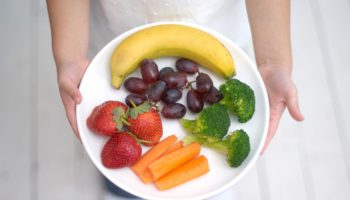Beth Simon
Mealtimes are busy times for teachers and children. When you’re dealing with 15 hungry 3 year-olds, it can be a challenge for even the calmest, coolest teacher to manage the high demand. Providing a pleasant experience at mealtimes encourages children to have a positive attitude toward food and promotes healthy eating habits.
Here are a few tips to make mealtimes less stressful and even meaningful to children:
Include children in the process. Children can be helpful with setting the tables for themselves and their friends by placing the plates, cups, utensils, and napkins on the table. This is a practical use of children’s emerging math skills and developing one-to-one correspondence.
Break into smaller groups. Everyone knows that routine tasks like hand washing and serving food are a lot easier with fewer children. However, if you have a large group of children in your classroom, break your large group into 2 or 3 smaller groups so these tasks are easier to handle. Be purposeful when selecting children to be in groups; try to include a mix of younger and older children in groups, so older children can model the routine for the younger ones.
Make sure tables and chairs are appropriately sized. Children come in all shapes and sizes, so should the furnishings in an early childhood classroom. Appropriately sized tables and chairs are those that children can easily get in and out of on their own, that allow children’s feet to touch the floor, and allow for their elbows to rest comfortably on the table top. If children have appropriately sized furnishings they will be able to access their food easier and manage the tasks of serving themselves and eating on their own better.
Serve meals family style. Yes, this can be messy, but so is some of the most meaningful learning! Try using bowls, trays, and platters for children to pass around the table so children can practice serving themselves. Use child-sized serving spoons and tongs; you can mark the serving spoons and tongs with colored handles so children can easily identify those from their personal utensils. Use squeeze bottles for messier items like jelly, salad dressing, ketchup, or peanut butter.
Serve well-rounded meals and snacks. It’s important to introduce a variety of foods to children to promote healthy eating habits. Encourage children to try new things, even if it’s only a small sample. You might get some push back from picky eaters, but it’s about providing healthy choices and allowing the child to make that choice. A healthy plate should be filled with lots of color. Check out the Child and Adult Care Food Program (CACFP) meal guidelines.
Sit down and enjoy the meal, too. By joining children at the table and taking part in the same meals and snacks as the children, you’re modeling positive attitudes about food, promoting healthy choices, and are able to manage appropriate meal time behavior (i.e., not sharing foods or drinks, replacing utensils if they’ve dropped on the floor, and assisting with additional servings). If you make the meal or snack a priority by being fully ‘present’ with the children and it being the focus of your attention, it shows the children that this is an important part of the day, just like story time and talking about the weather.
This is a social occasion. This is a great opportunity to engage in back and forth conversations with children. Providing a relaxed opportunity at meals allows children to feel open to share and to ask and answer questions. You can use this time as a learning experience to talk about the foods children are eating (i.e., food groups, shapes, sizes, colors, likes and dislikes) or you may use this time to talk about children’s home lives and sharing about what they did during morning play or what they plan to do that afternoon. Another approach is for you to take a back seat and encourage children to have conversations with one another.
Include children in clean up. Classroom floors can look similar to a war zone following a meal of spaghetti and meat sauce, so include the children in taking part in clean up and taking pride in how their classroom looks. You can provide a small bucket and sponges for children to wipe their space before leaving the table. You may also provide wet wipes or wet paper towels for children to wipe their hands and faces before they wash hands at the sink. A child-sized mop, dustpan, and broom will allow children to assist in cleaning up spills and messes. Preschoolers love to help clean; take advantage of this phase, it won’t last long!
Follow the same routine. Children thrive in routines. If children can follow the same, consistent routine each day leading up to, during, and after meals they will quickly become comfortable and begin to even desire the same daily rituals.
Here are some related articles:
Turn Mealtimes into Learning Time
Offering Support During Mealtimes and Snacks
Take Time to Savor Meals and Snacks in Child Care
Do you have any other ideas? Let us know how you make mealtimes meaningful in your early childhood classroom.




